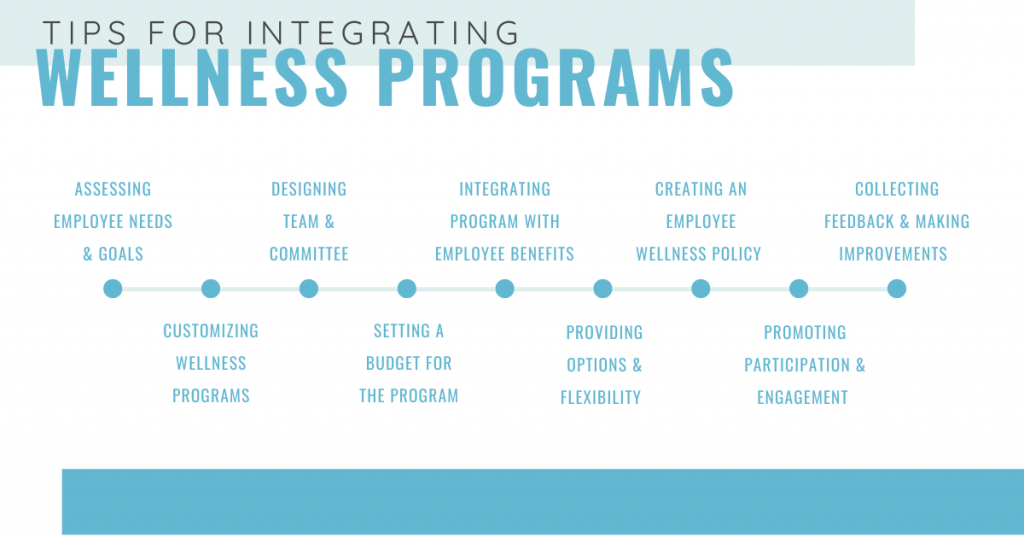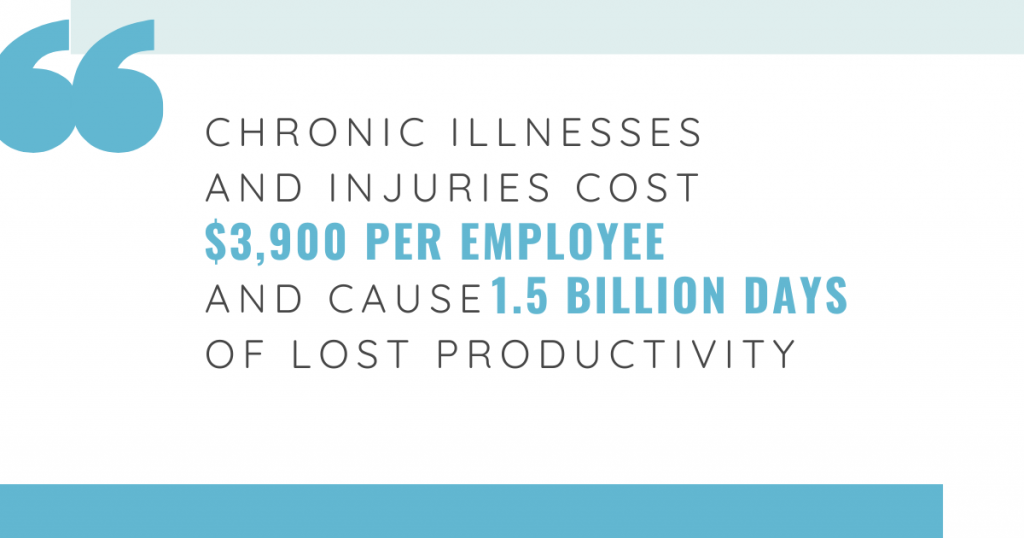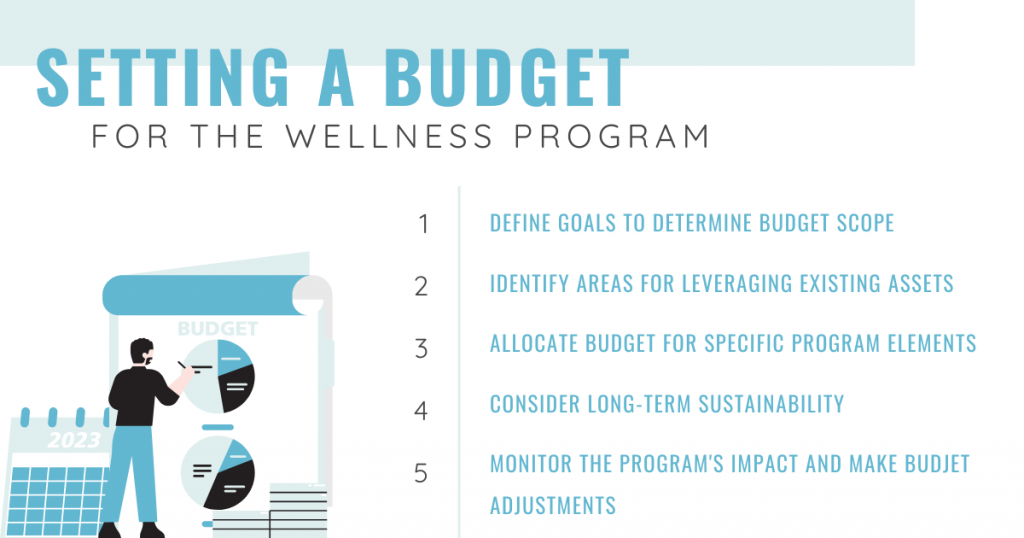
Key Elements of Successful Employee Wellness Programs
Despite widespread adoption and recognized benefits, why does skepticism still cloud the effectiveness of employee wellness programs?


Senior VP of Strategy at CuraLinc Healthcare
Often defined by a person’s physical and mental health, wellness has become a ubiquitous concept imprinted in our social and cultural norms. However, it goes beyond a feeling, illness, or a condition in the workplace. It’s the subtle change in performance, noticeable stress and anxiety, unresolved conflict, a high turnover rate, and much more.
Research by Gallup shows that failure to address wellness affects all aspects of an organization, costing companies $322 billion in lost productivity due to burnout and an additional 15% to 20% on total payroll in voluntary turnover costs.
Corporate wellness programs have emerged as a solution for the repercussions of poor well-being and a catalyst for enhancing additional benefits. For example, wellness statistics reveal that 70% of workers enrolled in wellness programs report higher job satisfaction, 62% lowered their healthcare costs, and 56% took fewer sick days.
As for employers, 77% agree that these initiatives positively impact company culture, 74% consider employee well-being beneficial in talent acquisition and retention, and 63% reported better financial sustainability and growth.
Since wellness initiatives have gained considerable recognition in driving organizational success, their integration into existing employee benefits has become a crucial focus for businesses aiming to cultivate a culture of holistic well-being.
This Shortlister article will explore how best to do so by delving into comprehensive strategies to help organizations effectively implement these initiatives.

According to the 2022 Global Benefits Attitudes survey, up to 69% of companies prioritize well-being to improve employee benefits. However, IBM’s research reveals a disconnect in this regard, as only 46% of employees feel supported by their employers.
This highlights the need for a tailored approach to workplace wellness programs, as there is no one-size-fits-all solution.
Bridging the gap between employer offerings and employee satisfaction requires deeply understanding employees’ needs and wellness goals. This informed approach lays the foundation for the successful integration of wellness programs for employees, and the following steps can help ensure their success:
Surveys, questionnaires, and focus groups can help companies pin down the diverse needs of employees. However, any attempt to increase wellness would fail without adequately aligning with the business’s goals.
For example, if the workforce expresses concerns about work-life balance or increased anxiety, the solution could be providing flexible work hours or stress management resources. But, when the company aims to increase productivity, the best way to tackle the discrepancy is to adhere to both sides through productivity workshops, incentives for meeting targets, and remote work options to improve work efficiency.
Holistic wellness, a concept that touches on all aspects of health, can solve the growing demand for comprehensive solutions. It incorporates various dimensions of employee health, and organizations can use it to develop a well-rounded program that caters to different aspects of employee well-being.
As an alternative to the holistic approach to wellness, employers can turn to more niche and customized solutions, such as physical health initiatives, nutrition programs, emotional wellness, and financial education.
Overall, whichever approach they choose, aligning it with employee needs and employers’ objectives is the key to a successful wellness program.



According to the Integrated Benefits Institute, poor employee health costs $575 billion annually. Namely, chronic illnesses and injuries cost $3,900 per employee and cause 1.5 billion days of lost productivity.
Therefore, encouraging physical wellness can cushion the financial impact for employers and the health risks for employees.
For example, initiatives like fitness challenges, exercise classes, or on-site health screenings can all contribute to better physical health and prevent or reduce the risk of underlying chronic conditions like heart disease, diabetes, and obesity.

Dr. Brock Chisholm, one of the World Health Organization’s (WHO) founders, once said, “Without mental health, there can be no true physical health.“
Over time, we’ve seen how these two interlink.
For example, the U.K. Mental Health Foundation acknowledges that people struggling with poor mental health are prone to physical health conditions like heart disease.
Destigmatization and the increasing awareness of mental health inevitably led to increased emotional wellness initiatives in the workplace. These are essential for creating a positive and accepting work environment where employees can bring their whole selves to work without fear of judgment.
Examples of this are stress management workshops, meditation and mindfulness apps, and access to counseling services through in-house resources or partnerships with external providers.
Finally, addressing employees’ financial well-being is becoming increasingly important in the modern workplace.
Statistics show that the cost of financial stress, which affects nearly half of the workforce, amounts to more than $1,900 per employee per year.
The monetary losses stem from decreased employee morale, job satisfaction, and productivity. In fact, employees spend 13 hours per month worrying about personal finances at work, directly causing a loss of productivity.
Therefore, organizations can provide resources and tools to support and educate their workers, such as financial planning workshops, retirement planning assistance, or access to financial counseling services.
Finally, addressing employees’ financial well-being is becoming increasingly important in the modern workplace.
Financial wellness statistics reveal that the cost of financial stress, which affects nearly half of all employees, amounts to more than $1,900 per employee per year.
The monetary losses stem from decreased employee morale, job satisfaction, and productivity. In fact, employees spend 13 hours per month worrying about personal finances at work, directly causing productivity loss.
Therefore, organizations can provide resources and tools to support and educate their workers, such as financial planning workshops, retirement planning assistance, or access to financial counseling services.
You’ve aligned your goals and employee expectations and chosen the preferred company wellness program. Now, the next step is to ensure it’s well received by the workforce.
One way to do so is by assigning dedicated wellness teams and committees.
Their primary role is to plan, implement, and oversee the wellness program. However, these individuals or groups are also responsible for initiating and advocating for the program, which increases employee engagement, ensures sustainability, and facilitates effective performance.
These wellness teams and committees often involve employees from different departments or organizational levels, including leadership, to ensure a holistic approach and diverse perspectives.
One report from the Health Enhancement Research Organization (HERO), in collaboration with Mercer, reveals that leadership recognition leads to higher employee participation rates in wellness initiatives. Namely, with leadership recognition, 61% of the workforce was engaged in health assessments, against 48% for wellness initiatives without it. There was also a 50% participation rate for biometric screenings and 25% for targeted coaching programs, versus 40% and 20%, respectively.
The report’s findings further reveal that organizations whose leaders are role models in prioritizing health and work-life balance are likelier to report improvements in employee health and medical costs.
Ultimately, going the extra mile and leading by example will ensure the wellness initiatives have a lasting impact, rather than just implementing them for the added benefits.
The advantages of investing in a wellness program as part of a company’s benefits package are an excellent incentive for employers trying to increase their bottom line. However, they come with a price tag.
Although there isn’t a definite number in terms of costs, some sources place it between $150 and $1,200 per employee annually. Therefore, funding such a program requires careful consideration and planning.
To ensure it won’t set the company back, budgeting for an employee wellness program should consider the following aspects:

Although we briefly touched on this matter before, integrating a wellness program with existing employee benefits is a separate step in wellness implementation and a strategic move that aligns with the priorities of today’s workforce.
The Society for Human Resource Management (SHRM) reported that healthcare remains the most important employee benefit, followed closely by retirement and leave benefits. It’s worth noting that nearly all organizations, a staggering 98%, offer some form of health coverage, while 94% provide traditional 401(k) retirement plans. On the other hand, while leave benefits ranked highly, their prevalence in the workplace was relatively low.
This highlights the opportunity for organizations to leverage the power of workplace wellness programs to enhance employee benefits, addressing immediate healthcare needs and fostering a holistic well-being approach that encompasses all aspects of employees’ lives.
For example, a company that offers healthcare coverage but identifies a growing demand for better mental well-being can implement initiatives such as meditation and mindfulness, mental health insurance coverage, or Employee Assistance Programs (EAPs).
By integrating wellness initiatives into the existing benefits framework, companies can create a comprehensive package beyond traditional offerings, ultimately leading to a happier, healthier, and more engaged workforce.
Today’s workforce is a diverse group comprised by individuals with different demographics, backgrounds, lifestyles, and needs. In fact, for the first time, we are witnessing five different generations in one workplace, from the Silent Generation to Gen Z.
With such variation, it’s safe to assume that what works for one employee may not work for another. Therefore, recognizing and catering to workplace diversity is crucial to ensure the success and effectiveness of wellness initiatives.
Offering an assortment of wellness initiatives allows employees to choose activities that resonate with their individual preferences and goals.
In addition to this, incorporating flexibility in program participation and scheduling is essential. Employees have different responsibilities, so providing flexibility allows them to engage in wellness activities without disrupting their work-life balance.
This can involve offering flexible time slots for fitness classes, allowing employees to take breaks for meditation or stretching, or providing access to online resources for maximum convenience.
An employee wellness policy is a framework that puts everything together.
It provides direction for the program’s design, implementation, and management, aligns the program with the organization’s goals and values, ensures consistency and relevance, and communicates the program’s features, benefits, and participation details. Additionally, it establishes mechanisms for evaluation and improvement, allowing the program to evolve and maximize its impact over time.
Between this and addressing legal and ethical considerations, creating an employee wellness policy is crucial in implementing a wellness initiative as part of existing employee benefits.
It creates a solid foundation for a comprehensive wellness program promoting employee well-being and a thriving workplace.
Participation in company wellness programs is usually voluntary unless the employee wellness policy specifies otherwise. Even with high participation rates, the initiative’s success relies on the workers’ engagement.
One article by the Centers for Disease Control and Prevention (CDC) on the topic, for example, explains that “although participation is necessary to be engaged, employees have to be engaged to participate.“
Moreover, the CDC defines engagement as a sincere interest in leading a healthy life and associates the effectiveness of a wellness program for employees with the proportion of the genuinely engaged workforce.
Unfortunately, high participation and engagement rates are not guaranteed.
Usually, due to reasons like lack of awareness or incentives, irrelevant offerings, or inadequate program promotion, employees show little to no interest in partaking in the wellness programs.
Moreover, Kathy Mahieu, Senior Vice President of Strategy Operations at CuraLinc Healthcare, explains,

“A concierge service like CuraConnect – which proactively identifies and supports vulnerable employees through human connection, clinical intervention, and navigation to the most appropriate benefits – can help employers maximize the value of their existing benefits through a more seamless, integrated experience,” adds Mahieu.
Other strategies companies can employ to promote participation and engagement in employee wellness initiatives include:
By implementing these strategies, employers can create a supportive environment that encourages and promotes participation and engagement in employee wellness initiatives.
Before we wrap up this article, one final area of emphasis is measuring the effectiveness of an employee wellness program and making necessary improvements to ensure the benefits program remains beneficial and responsive to the employees’ needs.
This stage is critical for fostering a culture of continuous improvement and demonstrating a commitment to employee health.
Collecting feedback during the final phase follows the same approach as during the first. Surveys, questionnaires, and focus groups become vital again in understanding employee experiences, preferences, and suggestions. Then, once feedback has been collected, employers can take proactive steps to make improvements to the employee benefits program, including:

The wellness landscape is growing, and global market predictions show a significant expansion of 4.47% compound annual growth rate between 2023 and 2030.
Between this and the multiple benefits, integrating wellness programs into existing employee benefits is a strategic move that can significantly impact employee well-being and organizational success.
Disclosure: Some of the products featured in this blog post may come from our partners who compensate us. This might influence the selection of products we feature and their placement and presentation on the page. However, it does not impact our evaluations; our opinions are our own. The information provided in this post is for general informational purposes only.
Content Writer at Shortlister
Browse our curated list of vendors to find the best solution for your needs.
Subscribe to our newsletter for the latest trends, expert tips, and workplace insights!

Despite widespread adoption and recognized benefits, why does skepticism still cloud the effectiveness of employee wellness programs?

From benefits types to designing personalized packages, discover how a strategic approach to benefits can favor both the personnel and the employers.

Explore senior care statistics that accurately depict the growing importance of eldercare

Explore Shortlister’s corporate wellness industry trends for 2022, addressed in collaboration with outstanding CEOs, HR practitioners, and wellness professionals.
Used by most of the top employee benefits consultants in the US, Shortlister is where you can find, research and select HR and benefits vendors for your clients.
Shortlister helps you reach your ideal prospects. Claim your free account to control your message and receive employer, consultant and health plan leads.